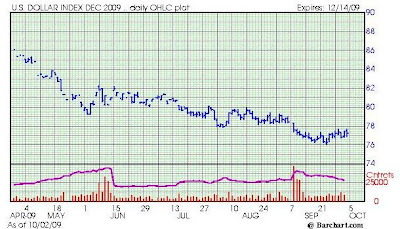This week I caught another fascinating interview on the Financial Sense Newshour – with Harry S. Dent, author of The Great Depression Ahead.
OK, so what’s so insightful about a guy publishing a next Great Depression in 2009? Well when it comes from the same guy that published The Great Boom Ahead in 1992, I definitely give his depression calls some credence!
I love guys who can call booms and busts. There aren’t many of them. Most investment analysts seem to have a bullish or bearish slant that, ultimately, sways their outlook.
Harry S. Dent seems to be pretty even keel. He made the case in ’92, and again earlier this decade, that the US boom would last longer, and go much farther, than anyone would anticipate. Why? Demographics.
By studying America’s demographics, Dent concluded that baby boomers would keep on spending, and driving the economy, until the latter part of this decade. I recall reading an article by him in 2004, where he made the case that the boom was going to last for at least a few more years. I thought the guy was nuts at the time! I was still waiting for the ’00-’02 correction to continue.
Well, Dent called it. And now he’s turning bearish. He sees a lot of dark clouds coming together at the same time, as the US descends into what he deems will be a long “economic winter.”
Japan, Dent says, suffered the same fate. Japan’s 1990 was our 2007, he says. That’s when the demographic worm turned for the Japanese, as they sank into their long, extended deflationary depression.
What a lovely older couple. Unfortunately for the US, we’ll soon have too many of them to keep our economy humming – according to Harry S. Dent.
In his interview with Puplava, Dent makes a very strong case for deflation ruling the day. According to him, inflation and deflation alternate in cycles that are strongly driven by demographics. So first deflation takes hold, then decelerates, then inflation grabs hold, decelerates, and the cycle starts anew.
In other words, he’s not expecting a repeat of the 1970’s, but instead, the 1930’s. Interestingly I’ve heard this from other market observers as well – some folks favor the 80-year megacycle.
The conversation was fascinating, and I’d highly recommend you give it a listen at least once. He’s going to be re-releasing his book later this year, so stay tuned, as we can reconvene to discuss it after it’s out. I’m looking forward to hearing his latest thoughts.
Here’s the link to the interview: http://www.financialsense.com/Experts/2009/Dent.html
Gauging Investor Sentiment With the WSJ
My article last week, about using the Wall Street Journal to gauge investor sentiment, was republished by Seeking Alpha. It collected quite the stream of comments – some very astute, and some pretty dumb. Here’s the link to the article and comments:
I plan to continue to work sentiment indicators into our discussion more and more. Because I find them fascinating, and also because I believe I made my biggest investing/trading mistakes when I was trading euphorically with the herd, rather than against it.
Your feedback and comments are always very much appreciated.
Most Popular Posts Last Week
- Using the Wall Street Journal to Gauge Investor Sentiment
- Links to Two More (Excellent) Marc Faber Interviews
- Who’s Buying Oil Today? The Answer May Surprise You
Positions Update – Still Long the Buck
The dollar continues to see strong support at these levels, while sentiment appears to still be quite negative. It’s a good sign when an asset goes up, despite continued “bad” fundamental news.
Sure, the dollar may indeed be a doomed currency – eventually. But you’re not going to make any money on that trade as long as everyone else believes it too!
Reports of the dollar’s demise have, until now, been greatly exaggerated.
(Source: Barchart.com)
Open positions:
Thanks for reading!
Current Account Value: $25,479.83
Cashed out: $20,000.00
Total value: $45,479.83
Weekly return: 1.0%
2009 YTD return: -49.8% (Yikes!)
Total value: $45,479.83
Weekly return: 1.0%
2009 YTD return: -49.8% (Yikes!)
Prior yearly returns:
2008: -8%
2007: 175%
2006: 60%
2005: 805%
Initial trading stake: $2,000.00




Recent Comments